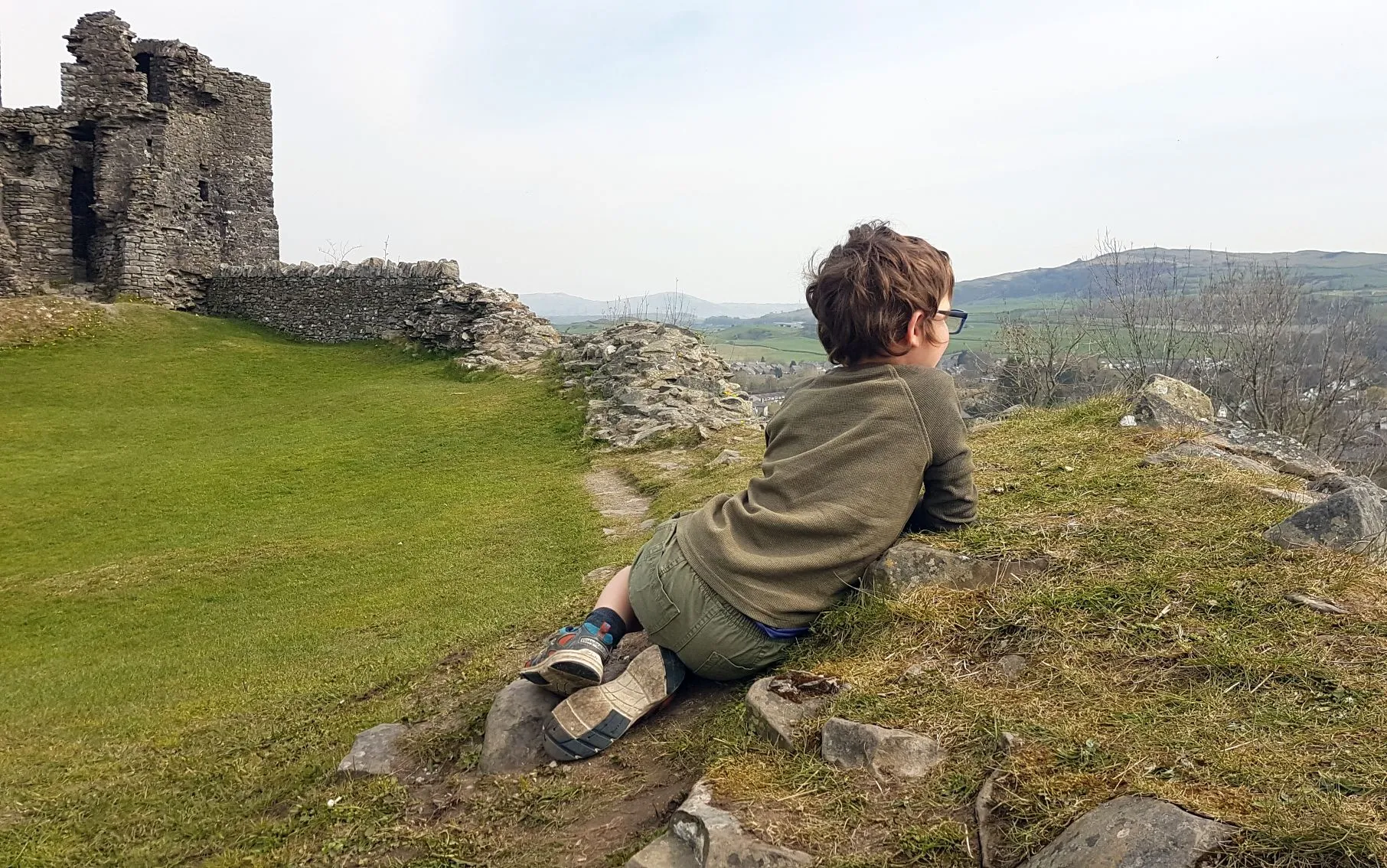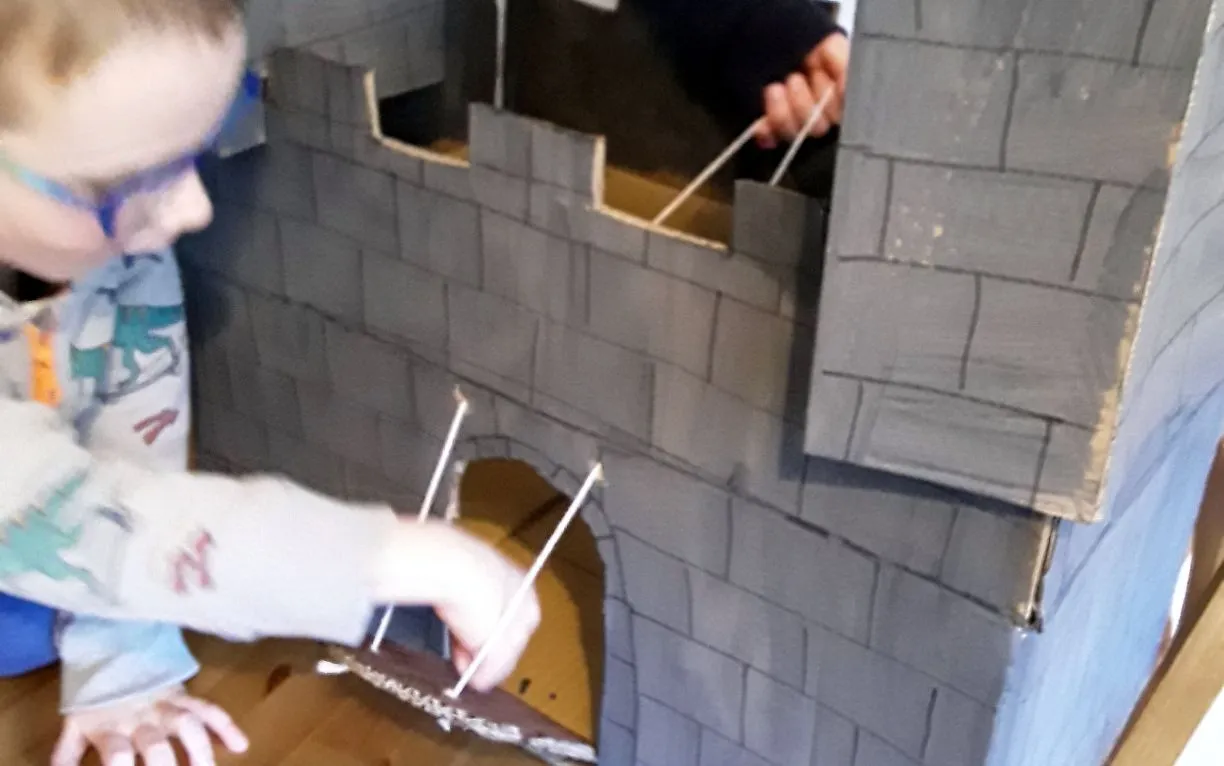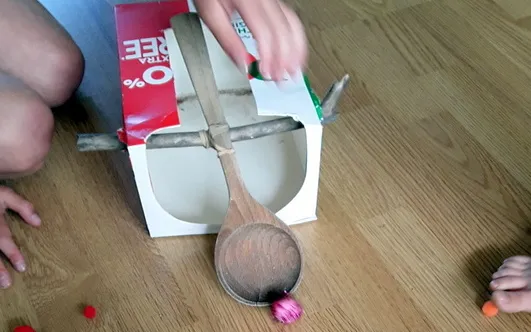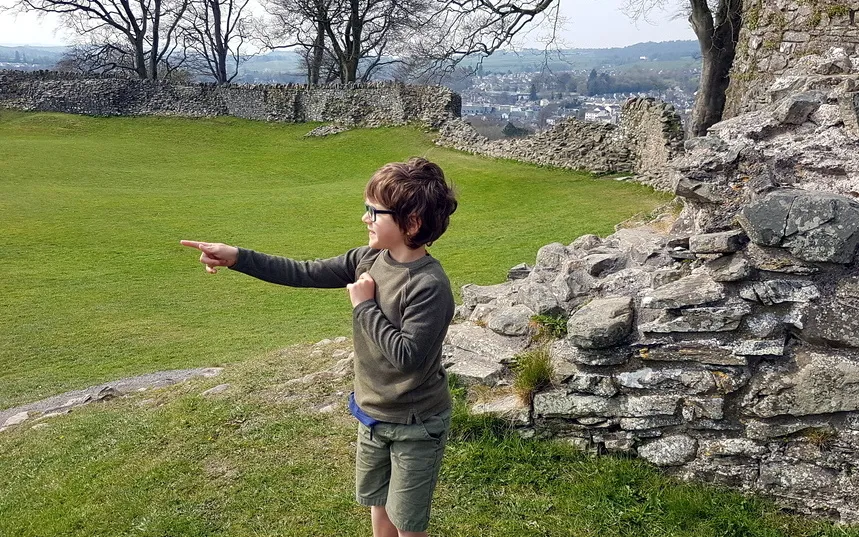
English Activities
- Year One / Key Stage 1
- Year Two / Key Stage 1
- Year Three / Key Stage Two
- Year Four / Key Stage Two
- Free E-Books: KS1 Book Challenge
- KS2 Book Challenge
- Free Media: Key Stage 1 Videos
- Key Stage 2 Videos
Maths Activities
- E-Books: STEM Journal
Science Activities
- E-Books: History Timeline Notebook
- Nature Journal
- STEM Journal
Topic Activities
- Key Stage One
- Key Stage Two
- Year 1 / KS1
- Year 2 / KS1
- Year 3 / Key Stage Two
- Year 4 / Key Stage Two
- Year 5 / Key Stage Two
- Year 6 / Key Stage Two
- Guide: EYFS / ELG
- Guide: National Curriculum of England
- Guide: Articles
Contact Hub
- Frequently Asked Questions
- Memberships
- We're Hiring!
- One Tree Planted
- 1% For The Planet
- We're Hiring

Castles Topic Activities
Hands-On Education: A Unique Approach to Learning for Key Stage 2

Key Stage One Castles Q&A from Hands-On Education
Hands-On Education is an education resources company committed to making primary education fun and engaging for students both in school and home education. We offer a range of key stage one activities covering various subjects that support parents and teachers in developing a pupils' understanding and knowledge throughout the entire national curriculum for England . The article below is written in question and answer format and covers ideas and lessons that go beyond what Hands-On Education currently offer. We hope you find inspiration and further your understanding of the geography, history, music, and art within castles.
By providing easy to understand lesson plans and worksheets you do not need to be a trained professional to use Hands-On Education’s free topics or paid content. Our aim is to help everyone and promote a lifelong love of learning.
Which Key Stage and year levels is the Castles Topic suitable for?
This KS1 Castles Topic is designed to cater to the developmental stages of Key Stage 1 (Year 1 and Year 2), and Key Stage 2 students. Dive into exciting activities like the 'Castle Fieldtrip And Observation,' aligning perfectly with the Geography and History components of the National Curriculum of England. Get ready to inspire a class of little lords and ladies with engaging resources that bring the world of Castles to life!
What subjects are covered in the Castles Topic lessons?
The Castles Topic encompasses a comprehensive exploration of various subjects, including Art, Design & Technology, Geography, History, and Music. Dive into the world of castles with engaging lessons such as 'Art | Bayeux Tapestry,' 'Geography | Why were castles built on hills?,' 'History | The Battle of Hastings and the Norman Conquest,' and 'Music | Exploring Medieval Instruments.' Each lesson is meticulously crafted to provide an in-depth understanding of the rich history and cultural significance of castles. Download now and unlock a treasure trove of educational resources that align with the National Curriculum.
What resources are provided in the Castles Topic pack, such as lesson plans, videos, activities, and worksheets?
Resources provided in the Castles Topic pack include a wide range of activity resources related to the National Curriculum, downloadable materials, engaging videos, handy timeline cards, interactive activity sheets, detailed design criteria sheets, exciting hands-on activities, and suggested resources such as books. Additionally, there are instructions for creating various items like castles, heraldry designs, illuminating letters, and catapults. The pack also offers optional resources like cardboard boxes, craft sticks, paint, cooking ingredients, and field trip activity sheets. These resources cover subjects like Art & Design, Design & Technology, Geography, and History, meeting various aspects of the National Curriculum of England.

How can the Castles Art lessons enhance students' understanding of art featuring castles?
Castles Art lessons can enhance students' understanding of art featuring castles, Passage_1 offers a detailed explanation. In this intriguing topic, students will immerse themselves in the captivating history of castles through engaging activities such as designing and constructing their own castle, creating castle characters, and exploring the timeline of castles. Additionally, they will delve into illuminating letters, heraldry design, and even experience the culinary traditions of castles. It is worth noting that this resource aligns with multiple aspects of the National Curriculum of England, including Art, Design & Technology, Geography, and History.
What is included in the Castle KS1 DT lessons and how do they contribute to the cross-curricular approach of the Castles Topic?
Castle KS1 DT lessons include various activities such as designing and building a castle, creating castle characters, exploring heraldry design, illuminating letters, cooking in castles, making a catapult, and going on a castle field trip. These activities contribute to the cross-curricular approach of the Castles Topic by integrating subjects like Design & Technology, History, Art & Design, and Geography. Students not only learn about castles but also engage in hands-on learning experiences that enhance their understanding of different subjects within the National Curriculum of England. The Castle KS1 DT lessons offer a rich array of learning opportunities, from designing medieval tools to constructing intricate castle models.
Each lesson is thoughtfully crafted with detailed plans, videos, and a variety of engaging activities suitable for all learners. With printable resources and differentiated tasks, students delve deep into the world of castles, exploring their historical significance while honing their design and creative skills. By immersing students in activities like cooking in castles and making catapults, these lessons seamlessly blend Design & Technology, History, Art & Design, and Geography, creating a holistic educational experience that brings the Castles Topic to life.
What historical aspects are explored in the Castles History lessons, such as the Battle of Hastings, Norman castles, and the Tower of London?
Illuminating Letters, Heraldry Design, and Cooking In Castles are some of the engaging activities included in the Castles History lessons. These activities aim to provide hands-on learning experiences related to the historical aspects explored in the lessons, such as the Battle of Hastings, Norman castles, and the Tower of London. Students will delve into the design and construction of castles, gain an understanding of the people who lived in them, and explore the significance of heraldry and illuminating letters in medieval times. By immersing themselves in these activities, students will develop a deeper appreciation for the rich history of castles and the events that shaped them.

Which topics are covered in the Bayeux Tapestry KS1 Art lesson?
In the Bayeux Tapestry KS1 Art lesson, students will engage in a variety of activities to explore the fascinating story behind the Bayeux Tapestry. Activity 7 will involve watching a video about the tapestry and then using materials such as roll of paper/A3 paper, tape, coloured pens, paint, and paintbrushes to create their own artistic interpretations. Through this hands-on approach, children will delve into the realms of Art & Design and History, gaining a deeper understanding of the significance of this historical masterpiece.
What is included in the watercolour castles KS1 lesson?
In this comprehensive topic, your child will embark on an exciting journey delving into the rich history of castles. They will have the opportunity to design and build their very own castle, create engaging castle characters, and explore the fascinating timeline of castles throughout history. Additionally, they will immerse themselves in the art of illuminating letters, master the intricate design of heraldry, and even try their hand at cooking as it was done in medieval castles. Get ready for an immersive experience that will spark curiosity and creativity in your child's exploration of the captivating world of castles.
What is the focus of the designing medieval tools KS1 DT lesson?
Welcome to the 'Design And Make A Catapult' activity, where you will have the opportunity to explore the world of catapults through a hands-on project. In this engaging session, you will watch an 'About Catapults' video to understand their historical significance. To guide your design process, you will be provided with a Catapult Design Criteria Sheet. Gather your materials, including a pencil, cardboard box from recycling, stick or pencil, scissors, wooden spoon or tea spoon, elastic band, and small bouncy ball or pom poms. Throughout this Design & Technology session, you will not only create your catapult but also delve into the history behind these fascinating medieval tools. Get ready to unleash your creativity and engineering skills in this exciting exploration!

What will students learn and do in the design and make a castle KS1 lesson?
In this design and make a castle KS1 lesson, students will embark on an exciting journey into the history of castles. They will have the opportunity to design and construct their own castle, create imaginative castle characters, and explore the fascinating timeline of castles. Additionally, students will delve into the intriguing world of illuminating letters, heraldry design, and even the culinary delights within castle kitchens. This resource is aligned with the National Curriculum of England, covering areas such as Art, Design & Technology, Geography, and History. Be sure to explore our wide range of key stage one topics to discover engaging Curriculum Activities for both classroom settings and home education. With plenty of subjects to choose from, you'll find a wealth of resources to enrich your lesson planning and captivate young minds.
What will students explore in the castle land features KS1 lesson?
Students in the castle land features KS1 lesson will dive into the history of castles by designing and building one, create castle characters, and discover the timeline of castles. They will also delve into illuminating letters, heraldry design, and cooking in castles. This resource meets the following aspects of the National Curriculum of England: Art, Design & Technology, Geography, and History. In this engaging lesson, students will explore the fascinating world of castles through hands-on activities that encourage creativity and critical thinking. By designing and constructing their own castles, students will gain a deeper understanding of the architectural features that made castles both defensive fortresses and majestic structures.
Through activities like creating castle characters and exploring heraldry design, students will immerse themselves in the medieval world, learning about the people and symbols that defined this era. Delve into the rich history of castles with illuminating letters and discover the art of cooking in castles, providing a sensory experience that brings history to life. This comprehensive resource not only enriches students' knowledge of castles but also aligns with key aspects of the National Curriculum, including Art, Design & Technology, Geography, and History. Don’t forget to check out the rest of our key stage one topics for a wide range of curriculum standard activities that will captivate your classroom or home-educated children.
What resources are included in the Tower of London history lesson for KS1 class?
In this Tower of London history lesson for KS1 class, students will have access to a wide range of engaging resources and activities to enhance their learning experience. The lesson includes a variety of activities related to castle history, such as designing and building a castle, exploring castle characters, creating heraldry designs, illuminating letters, experiencing cooking in castles, learning about the Bayeux Tapestry story, designing and making a catapult, and participating in a castle field trip. Each activity is designed to immerse students in different aspects of history and promote interactive learning. Optional materials like cardboard boxes, craft sticks, paint, scissors, and more are provided to facilitate hands-on exploration and creativity. By offering a diverse set of resources, this Tower of London history lesson aims to make learning history enjoyable and memorable for KS1 students.

What are the music objectives for KS1 students, involving playing instruments musically and listening to high-quality music?
The music objectives for Key Stage 1 (KS1) students, focusing on playing instruments musically and listening to high-quality music, include the following:
- KS1 students should be able to play tuned and untuned instruments in a musical manner, demonstrating an understanding of rhythm, melody, and expression.
- They should engage in listening activities with concentration and comprehension, being able to appreciate a variety of high-quality live and recorded music across different genres and styles.
- Students should have opportunities to experiment with creating sounds, selecting specific elements, and combining sounds in ways that explore the various dimensions of music, such as pitch, tempo, dynamics, and timbre.

What are the history objectives for KS1 students, focusing on significant individuals, events, and places in the past?
The history objectives for Key Stage 1 (KS1) students emphasize learning about the lives of significant individuals from the past who have made notable contributions to both national and international achievements. Students are encouraged to study the impact and roles of these individuals in historical contexts, providing a valuable lens through which to understand the progression of society over time. Furthermore, the curriculum aims to enable students to compare various aspects of life across different historical periods, fostering critical thinking and a deeper appreciation for how societies evolve.
Additionally, KS1 history objectives promote the exploration of significant historical events, people, and places that hold importance within the students' own localities. By connecting history to their immediate environment, students can gain a sense of personal relevance and a better understanding of the historical significance of their community. This approach not only enhances students' historical knowledge but also encourages them to develop a strong sense of identity within the context of their own local history.


What are the art objectives for KS1 students related to using a range of materials creatively and developing art techniques?
The art objectives for Key Stage 1 (KS1) students in relation to using a variety of materials creatively and enhancing art techniques include:
- Encouraging students to creatively utilize different materials for designing and producing various products.
- Emphasizing the use of drawing as a means to express and communicate their ideas, experiences, and imagination.
- Promoting painting as a tool for developing and sharing their thoughts, experiences, and creativity.
- Fostering the acquisition of a diverse set of art and design techniques incorporating elements such as color, pattern, texture, line, shape, form, and space.
- Introducing students to the works of various artists, craft makers, and designers, allowing them to identify differences and similarities across different artistic practices and disciplines, and facilitating connections to their own creative endeavours.
What activities and topics are covered in the medieval music lesson for KS1 class?
In the medieval music lesson for KS1 class, students will engage in listening to medieval music, exploring how the instruments were played in that era. They will also get the chance to experience playing modern versions of these instruments and follow non-verbal instructions to play together in harmony. This lesson integrates with the cross-curricular castles topic and includes a comprehensive plan, slideshow, and various engaging teaching resources all available for download.

How will students apply their geographical skills in a lesson in their page?
In the upcoming lesson in Passage_1, students will actively engage their geographical skills by starting with locating the UK and its constituent countries on a world map. Following this, they will progress to identifying and pinpointing the capital cities of the UK. Additionally, students will analyze the land features surrounding each castle in the capital cities to speculate on the reasons for the selection of those locations for settlement. This exercise encourages students to think critically about which geographical factors influenced historical settlement decisions near castle sites, demonstrating a practical application of geographical knowledge.
What geographical concepts and vocabulary are covered in the Geography Castles topic lesson?
In the Geography Castles topic lesson, various geographical concepts and vocabulary related to castles and their locations are covered. Students will learn about the significance of the strategic placement of castles, different types of landscapes where castles were built, and how geographical features influenced the construction and defense strategies of these historic structures. The lesson explores terms such as topography, fortification, terrain, and geographic location in the context of understanding the role of geography in the history of castles.
How can the Castles music lessons introduce students to medieval musical instruments and composition?
The Castles music lessons offer a comprehensive approach to introducing students to medieval musical instruments and composition. Through two ready-to-teach lessons, children will explore the fascinating world of medieval music by learning about traditional instruments and creating their own compositions. The lessons include detailed plans, engaging slide presentations, various activities tailored to different skill levels, and printable resources to support students throughout their learning process. By following these structured lessons, students can develop a deeper understanding of medieval music, including its unique instruments and the creative process of composing their own pieces.
What are the benefits of using the Castles Topic lessons for teaching about medieval castles to Year 1 and Year 2 students?
Using the Castles Topic lessons to teach Year 1 and Year 2 students about medieval castles offers a range of benefits. These lessons cover various aspects of medieval castles including their history, the Normans, locations where castles are built, residents of castles, castle structure, and more. The activities included in the lessons are tailored for Key Stage 1 (KS1) students and are designed to be ready-to-teach across different curriculum subjects. Each lesson plan is detailed and comprehensive, accompanied by a video, differentiated activity ideas, and a variety of colourful printable worksheets and resources. By downloading the KS1 Castles Topic, teachers can effectively engage their students in the intriguing world of medieval castles while saving valuable planning time.
What are some specific lesson topics included in the Castles Topic, such as Art, Geography, History, and Music?
The Castles Topic consists of 9 lessons that cover a wide range of subjects such as Art, Geography, History, and Music. Specific lesson topics include exploring castle land features, designing and making a castle, the Battle of Hastings and the Norman Conquest, composing music, and more. Students can delve into various aspects of castle history, architecture, and cultural significance through lessons on watercolour castles, designing medieval tools, and exploring medieval instruments. The lessons also encompass topics like the structure of a medieval castle, the Tower of London history, and why castles were built on hills. By engaging with these diverse lesson topics, students can gain a comprehensive understanding of castles across different disciplines.

- Art and Design
- Design and Technology
- Mathematics
- Physical Education
Discover Hands-On Education

Reception (Completely Free)

English Topics (Year 1-3)

Maths Topics (Year 1-3)

Science Topics (Year 1-4)

Key Stage 1 Topics (Year 1 & 2)

Key Stage 2 Topics (Year 3-6)

Free Topics (All Years)

Primary Booklists (All Years)

IMAGES